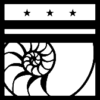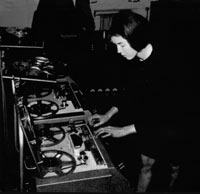Bleep! Bloop! 
For the next few Thursdays at 7:30 pm, Elliot will be leading a workshop on sound hacking from the ground up. We’ll mostly focus on building our own gear, but we’ll also borrow a couple tricks from the glitch/bender tradition.
April 16th, we’ll start off by scratch-building a mess of raw sound sources. After that, we’ll work on smoothing out the rough edges and trying to make this stuff more musical. (Or you could go for more cacophonous. It’s up to you.) After the first two or three weeks, I’m open to suggestions. Let’s see where we can take
this.
This workshop series is going to involve soldering, (ab)use of digital CMOS chips for analog ends, a smidgen of electronics knowledge provided), and enough noise to ensure that you leave with a good solid headache.
Bring $5.00 to cover the cost of materials for April 16th.
Bring around 3-6 volts’ worth of batteries if you’d like to leave the space with something powered up. Two to four AA, AAA, C, or D cells will do. Three if you’re using rechargeables.
Also, if you’ve got a breadboard and would like to use it, bring that too. Otherwise, you’re going to be doing it dead-bug style like me.
Come on, feel the noise!


 A soundscape is “an environment of sound (or sonic environment) with emphasis on the way it is perceived and understood by the individual, or by a society” (Barry Truax, *Handbook for Acoustic Ecology*). Soundscapes can include natural sounds (like animal noises or weather) and/or environmental sounds that result from human activities.
A soundscape is “an environment of sound (or sonic environment) with emphasis on the way it is perceived and understood by the individual, or by a society” (Barry Truax, *Handbook for Acoustic Ecology*). Soundscapes can include natural sounds (like animal noises or weather) and/or environmental sounds that result from human activities.